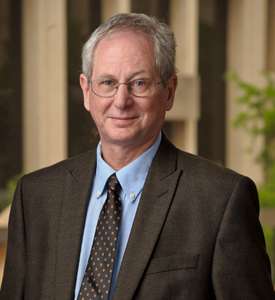High insulin levels tied to obesity pathway, research shows

UT Southwestern Medical Center researchers have identified a crucial link between high levels of insulin and pathways that lead to obesity, a finding that may have important implications when treating diabetes.
Researchers with the UT Southwestern's Touchstone Center for Diabetes found that giving mice high levels ofinsulin, which is typically done to counter the effects ofdiabetesorinsulin resistancein Type 2 diabetes, also fosters processes that lead to obesity.
The discovery was made by studying mice engineered to lack receptors for a hormone called glucagon.
Glucagon spurs the liver's production of glucose into the bloodstream and thus maintains the fuel supply for the brain. Insulin blocks the secretion of glucagon, opposes glucagon action on the liver, and instructs the body to take up glucose from the blood. Type 2 diabetics cannot respond properly to insulin and have uncontrolled glucagon production, thereby causing their livers to overproduce glucose, contributing to high blood-sugar levels. Insulin is often given to people withtype 2 diabetesto try to overcome insulin-resistance and lower the levels of glucose in the bloodstream.
But insulin also signals the body to produce fat, so when given the high levels of insulin needed to control excess glucose, mice become fat, explained corresponding author Dr. Michael Roth, Professor of Biochemistry at UT Southwestern and a member of the Touchstone Diabetes Center.
"We found that mice lacking the receptor for glucagon cannot get fat unless they are given the high levels of insulin found in mice (and humans) that have type 2 diabetes," said Dr. Roth, who holds the Diane and Hal Brierley Distinguished Chair in Biomedical Research. "This result suggests that the high levels of insulin found in those who develop insulin resistance and type 2 diabetes are a contributor to obesity and its complications."
Dr. Roth cautioned that if this response also happens in humans, then treating patients with type 2 diabetes with higher than normal amounts of insulin could contribute to the development of obesity.
The findings suggest that physicians may need to reconsider use of intensive insulin therapy to control hyperglycemia (high blood-sugar levels) in obese, diabetic patients with hyperinsulinemia (overproduction of insulin). In addition, the findings suggest that suppressing glucagon action could prevent hyperinsulinemia, without causing diabetes. The research team found that suppressing glucagon in obese, insulin-resistant, type 2 diabetic mice reduced blood glucose back to normal levels.
Glucagon and insulin normally counteract each other as part of an ongoing effort to stabilize blood-sugar levels. The glucagon hormone is produced and released by the pancreas in response to low concentrations of insulin and, conversely, glucagon release is suppressed by high levels of insulin in the bloodstream. The balance between the two hormones is disrupted in type 2 diabetics by the insulin that is given to control high glucose levels. This excess insulin, in turn, causes the body to produce excess fat. The new findings lead the authors to suggest that the high insulin levels actually aggravate diabetes. The optimal therapy, they propose, should be diet restriction and reducingglucagonlevels.
According to estimates of the World Health Organization (WHO), 347 million people worldwide have diabetes, 90 percent of whom are affected by type 2 diabetes. Although previously only seen in adults, type 2 diabetes is now occurring in children, and can include complications such as an increased risk of heart disease and stroke, nerve damage, and eye disease.
The work, published in the journalProceedings of the National Academy of Sciences,建立在原来的诺贝尔奖得主的研究and Regental Professors Dr. Michael Brown, Director of the Jonsson Center for Molecular Genetics, and Dr. Joseph Goldstein, Chairman of Molecular Genetics, who showed that insulin increases lipogenesis, the production of fat, and demonstrated the role of insulin in the activity of SREBP family of transcription factors.













User comments